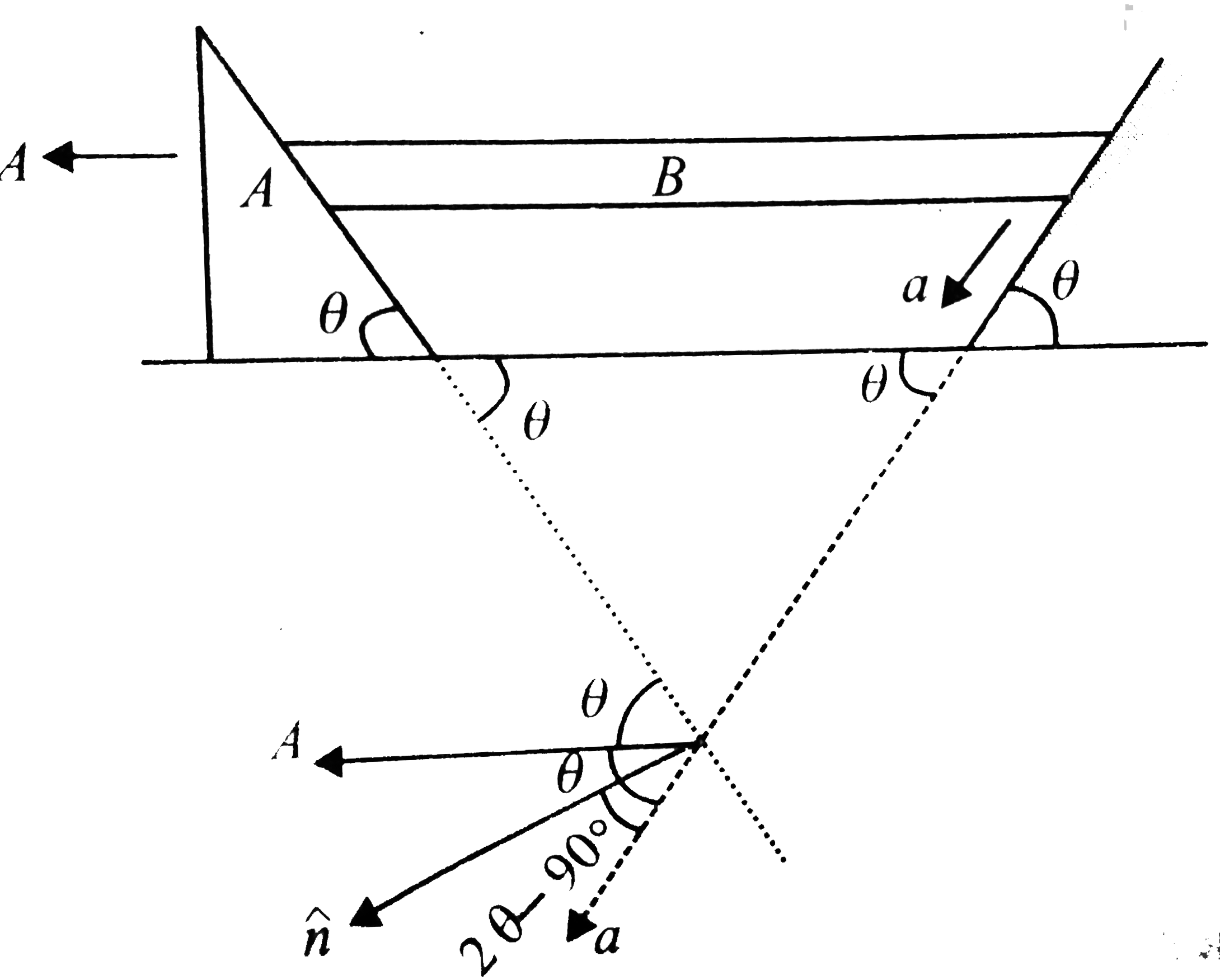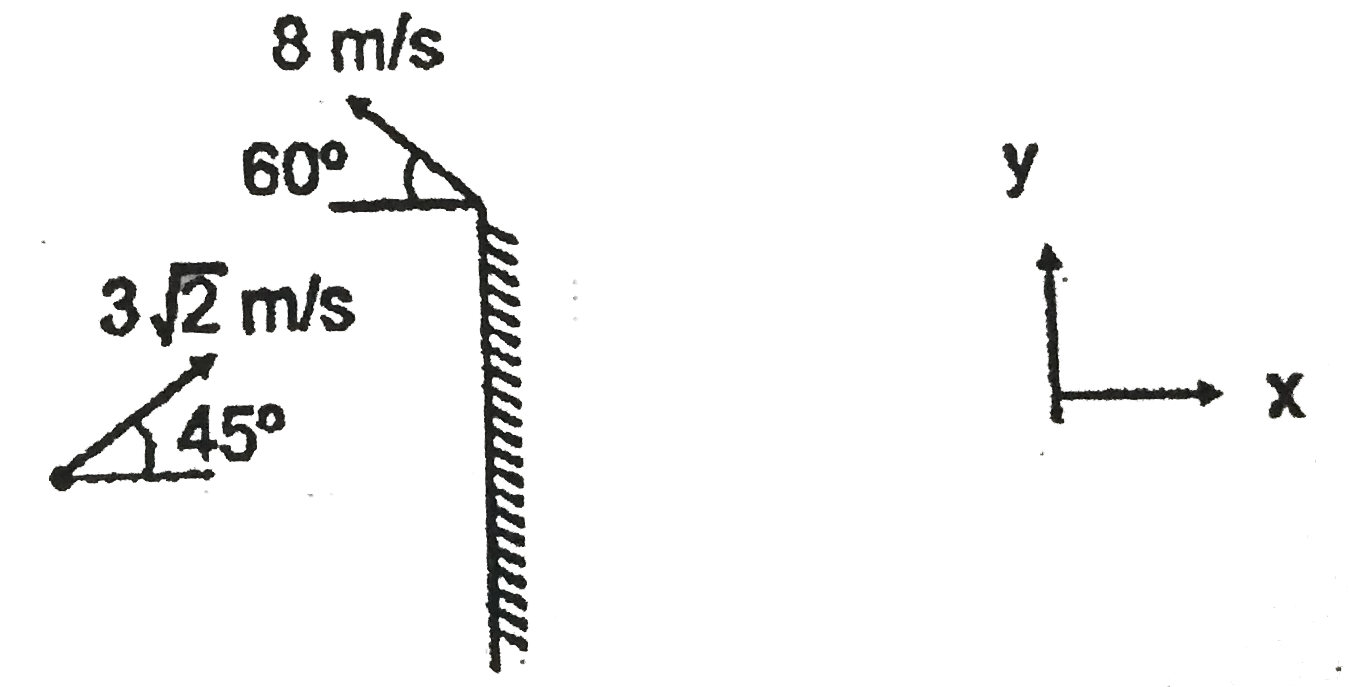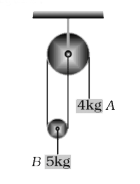In the situation as shown in the figure if acceleration of B is a, then find the acceleration of A (B always remain horizintal), 
A
(a)asinθ
B
(b)acotθ
C
(c)2atanθ
D
(d)2acosθ
Video Solution
Text Solution
The correct Answer is:D
Components of acclerations of A and B along normal (ˆn) to the incline of wedge should be the same

⇒Asinθ=acos(2θ−90∘)
⇒Asinθ=asin2θ
⇒A=2acosθ
|
Topper's Solved these Questions
- MISCELLANEOUS VOLUME 2BOOK - CENGAGE PHYSICS ENGLISHCHAPTER - MISCELLANEOUS VOLUME 2EXERCISE - MCQ_TYPE
20 Videos
- MISCELLANEOUS VOLUME 2BOOK - CENGAGE PHYSICS ENGLISHCHAPTER - MISCELLANEOUS VOLUME 2EXERCISE - LC_TYPE
34 Videos
- MISCELLANEOUS KINEMATICSBOOK - CENGAGE PHYSICS ENGLISHCHAPTER - MISCELLANEOUS KINEMATICSEXERCISE - Interger type
3 Videos
- NEWTON'S LAWS OF MOTION 1BOOK - CENGAGE PHYSICS ENGLISHCHAPTER - NEWTON'S LAWS OF MOTION 1EXERCISE - Integer
5 Videos
Similar Questions
Knowledge Check
In the system shown in the figure, the acceleration of 1 kg mass is
 Ag4downwardsBg2downwardsCg2upwardsDg4upwards
Ag4downwardsBg2downwardsCg2upwardsDg4upwards
In the arrangement shown in figure, if the acceleration of B is ¯a , then find the acceleration of A

View SolutionIn the arrangement shown in fig., if the acceleration of B is →a. Then find the acceleration of A.

View SolutionIn the figure shown acceleration of the block is

View SolutionIn the situation shown in figure, find the velocity of image.

View SolutionIn the situation shown in figure, find the velocity of image.

View SolutionTwo masses are shown in above figure find acceleration of center of mass?
View SolutionIn the arrangement shown in the figure, the acceleration of the pulley is, (Ignore friction)

View Solution


